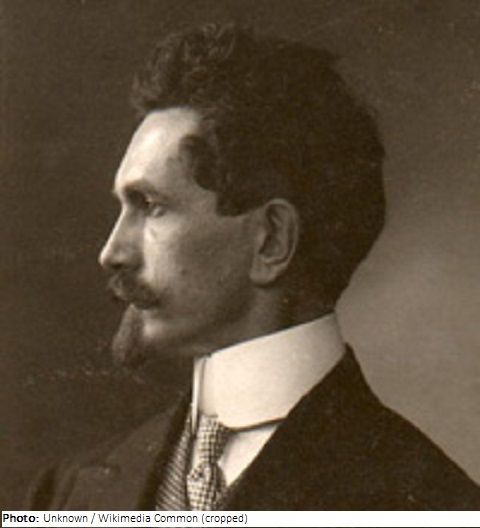Bohumil Kafka

Biographical information
| Roles | Referee |
|---|---|
| Sex | Male |
| Full name | Bohumil•Kafka |
| Used name | Bohumil•Kafka |
| Born | 14 February 1878 in Nová Paka, Královéhradecký kraj (CZE) |
| Died | 24 November 1942 in Praha (Prague), Hlavní město Praha (CZE) |
| NOC |  Czechoslovakia Czechoslovakia |
Biography
Bohumil Kafka was first trained at the technical school for stone sculpture in Hořice and then worked briefly as a stonemason and plasterer in Dresden and Bohemia. From 1896-1901, he attended the School of Applied Arts and the Academy of Fine Arts, both in Praha. Beginning in 1902, he exhibited with the Association of Visual Artists (SVU) Manes. In 1901-04, Kafka worked at the School of Applied Arts in Praha as an assistant to Stanislav Sucharda (1866-1916), where he also received in-depth training as a medal artist. During this period, he modeled medallions that go beyond 19th-century academic classicism by integrating floral motifs of Art Nouveau. His sculptural concept developed between the Art nouveau-Symbolism, ubiquitous in Bohemia, and the dominant influence of Auguste Rodin (1840-1917).
In 1904 Kafka went on a scholarship to Paris, where he stayed until 1908. While some works of this period refer to Rodin’s model, Kafka also succeeded in creating highly individual solutions. Highlights of Czech sculpture marked the series Peruvian Mummies (bronze group 1904, bronze relief 1905) and the bronze group Deer with Two Fawns (1905). He was also considered a leading representative of Czech funeral sculpture. Interrupted by study trips to Italy and Germany and staying in Paris, he lived in Praha again from 1909. Kafka succeeded Sucharda as a professor at the School of Applied Arts in 1916, became a full member of the Czech Academy of Arts and Sciences in 1924, and a professor at the Academy of Fine Arts in 1925. Between world wars, he was a busy sculptor whose concept, rooted predominantly in the 19th century, represented a backward-looking countercurrent to modern realism.
From 1924, Kafka was a member of the “Hagenbund”, and from 1936 of the “Kunstverein österreichischer Bildhauer”. In 1924, he was also made a Knight of the Legion of Honor and in 1937 received the Gold Medal at the World’s Fair in Paris. The main work of the late years became the bronze monument of the medieval military leader Jan Žižka (1360-1424), inaugurated in 1950 on Praha’s Vítkov Hill in colossal format, with 9 m one of the world’s largest equestrian statues. Kafka’s commissioned sculptures during the interwar period, designed for public spaces, provided stylistic guidelines to which the monument aesthetic in Communist Czechoslovakia after 1948 could follow seamlessly. In 1976, in the Castle Museum in Pecka near Nová Paka a permanent exhibition of Kafka’s works was set up.
Referee
| Games | Sport (Discipline) / Event | NOC / Team | Phase | Unit | Role | As | |
|---|---|---|---|---|---|---|---|
| 1924 Summer Olympics | Art Competitions |  TCH TCH |
Bohumil Kafka | ||||
| Sculpturing, Open (Olympic) | Final Standings | Judge |